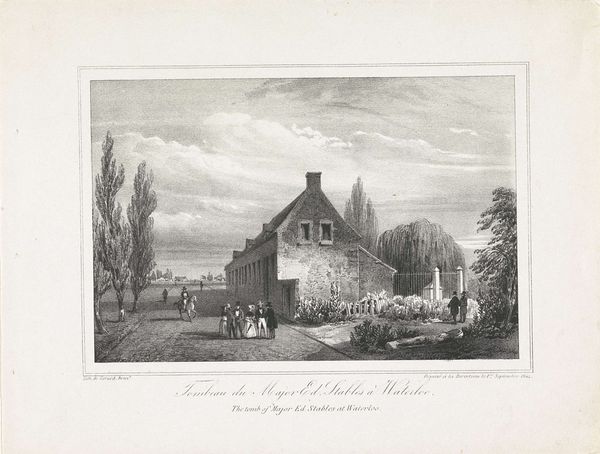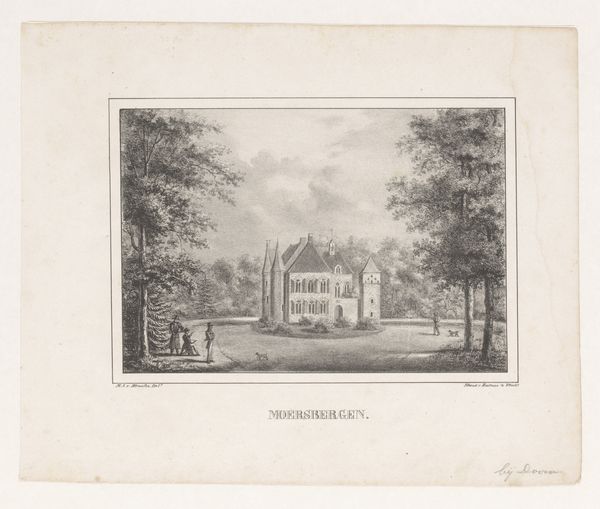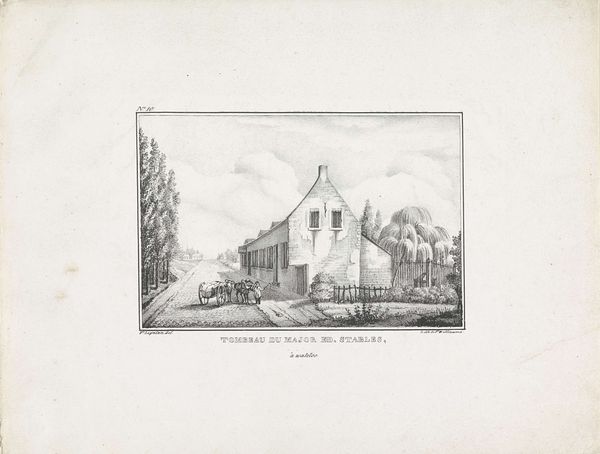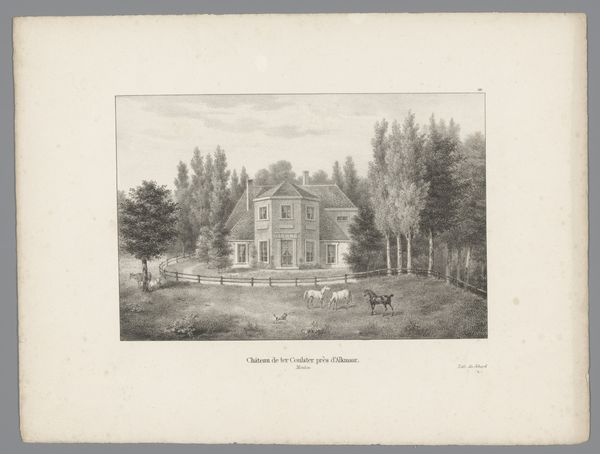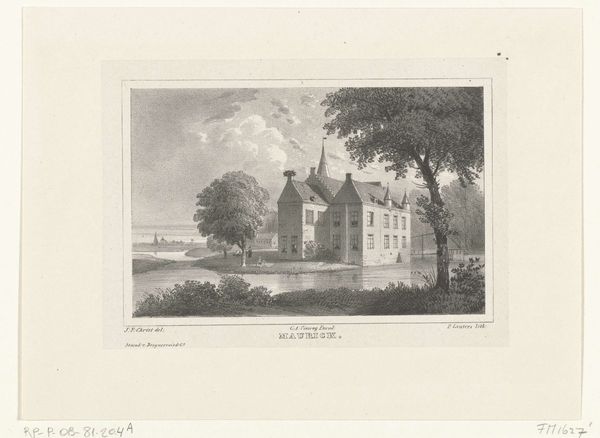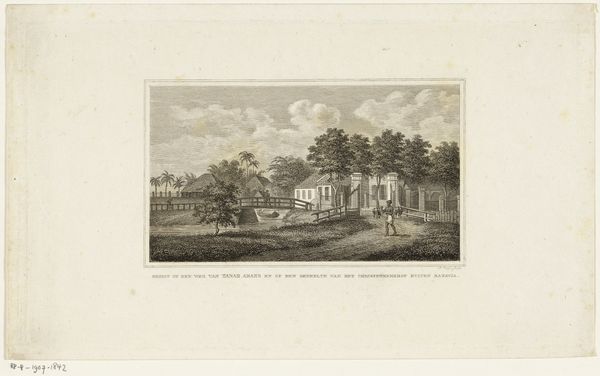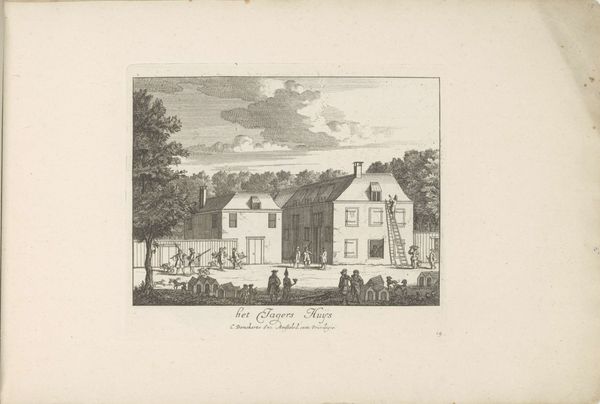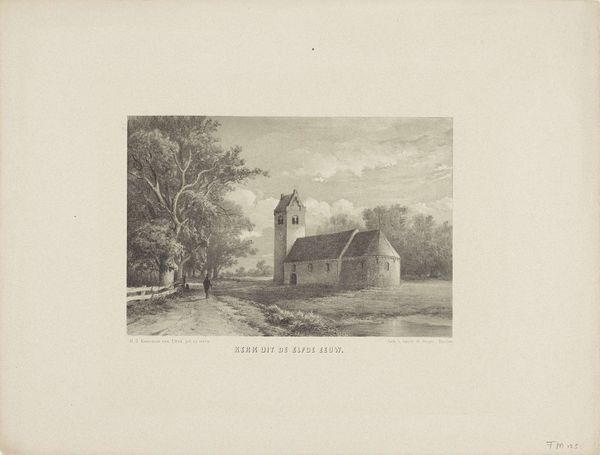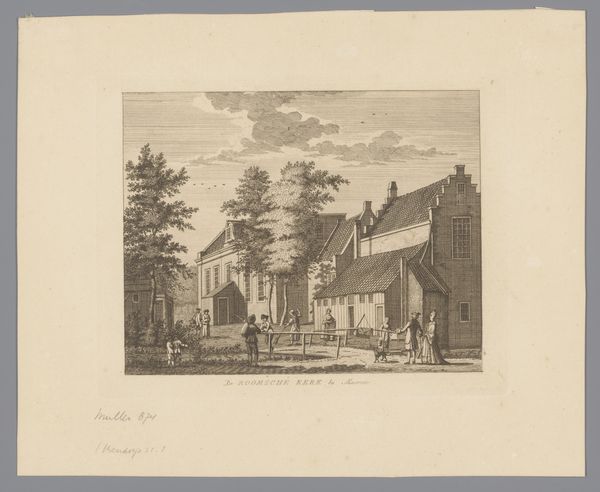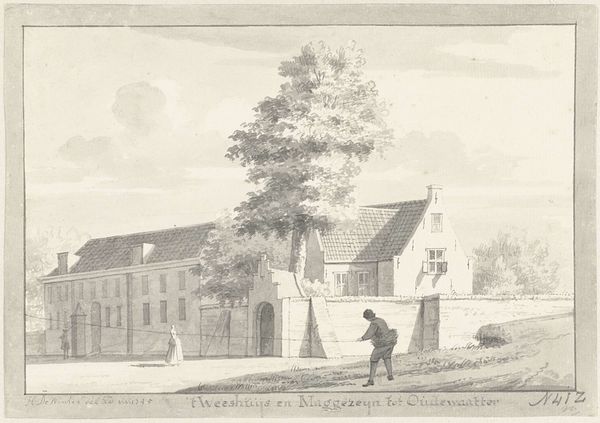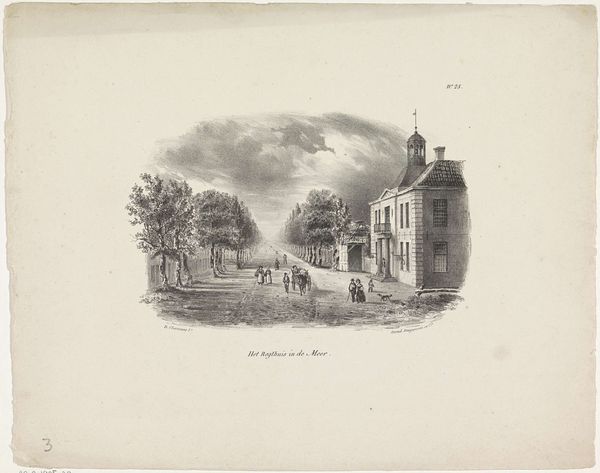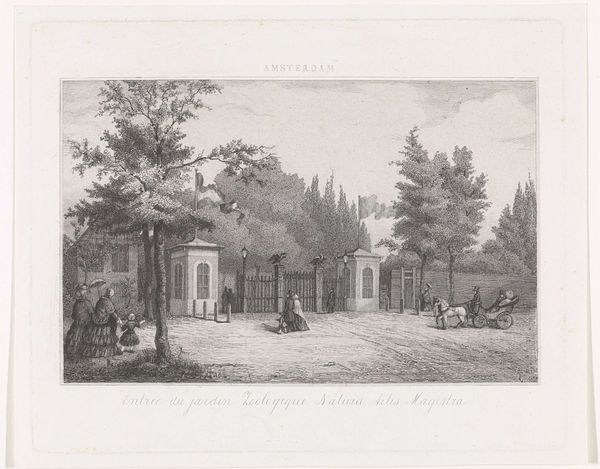
print, engraving
# print
#
old engraving style
#
landscape
#
romanticism
#
cityscape
#
academic-art
#
engraving
#
realism
Dimensions: height 215 mm, width 261 mm
Copyright: Rijks Museum: Open Domain
Curator: This is "Hoofdwacht te Oisterwijk, 1830-1831", an engraving created circa 1831 by Joannes Willem Vos. It depicts a guardhouse in Oisterwijk, a town in the Netherlands. Editor: There's such stillness, isn't there? Almost unnervingly so. That lone figure standing guard seems trapped in a perpetual afternoon, under that overcast sky. The monochrome heightens that feeling, everything is subtly muted and even the details seem a bit unreal. Curator: I'd say the realism of the piece underscores the sociopolitical environment. The Netherlands had only recently been reunited after French rule. The guardhouse isn't simply a building, it represents state control, a newly re-asserted authority during a time of burgeoning national identity and cultural romanticism. Editor: Mmm, true. But it also gives me this strange melancholy vibe. Is it just me or does that little steeple feel lonely? Like a kid who raised his hand to ask a question but the teacher is busy. And then there is this woman, and they sit still for ages; are they in waiting of their judgement or salvation? Is she even allowed to sit down in front of it? Perhaps salvation is for those with higher social standards only. Curator: The composition intentionally creates this tension, this feeling of watchful waiting. Look at how the lines of the fence direct the viewer's eye towards the guardhouse. Consider the role of surveillance. How does the engraving communicate power structures? Editor: That one tree standing kind of in the middle, on the right side… It is almost like someone observing silently; what kind of judgement this guardian might be? I love how such seemingly plain artwork can be like peeling layers of an onion, makes me wanna laugh and cry. Curator: Precisely! Understanding those tensions, appreciating the deliberate construction of space – it's all woven into the context of the time, influencing how people perceived security, governance, and even national pride. Editor: So true. This engraving’s made me rethink guardhouses; it feels very different from all the ones shown in TV shows. Okay, that said, I am going to stop overthinking things and grab a pastry; what do you say? Curator: Absolutely. It’s important to see these engravings, these windows into the past, not as static images, but as active participants in conversations that continue to shape our understanding of the present.
Comments
No comments
Be the first to comment and join the conversation on the ultimate creative platform.
